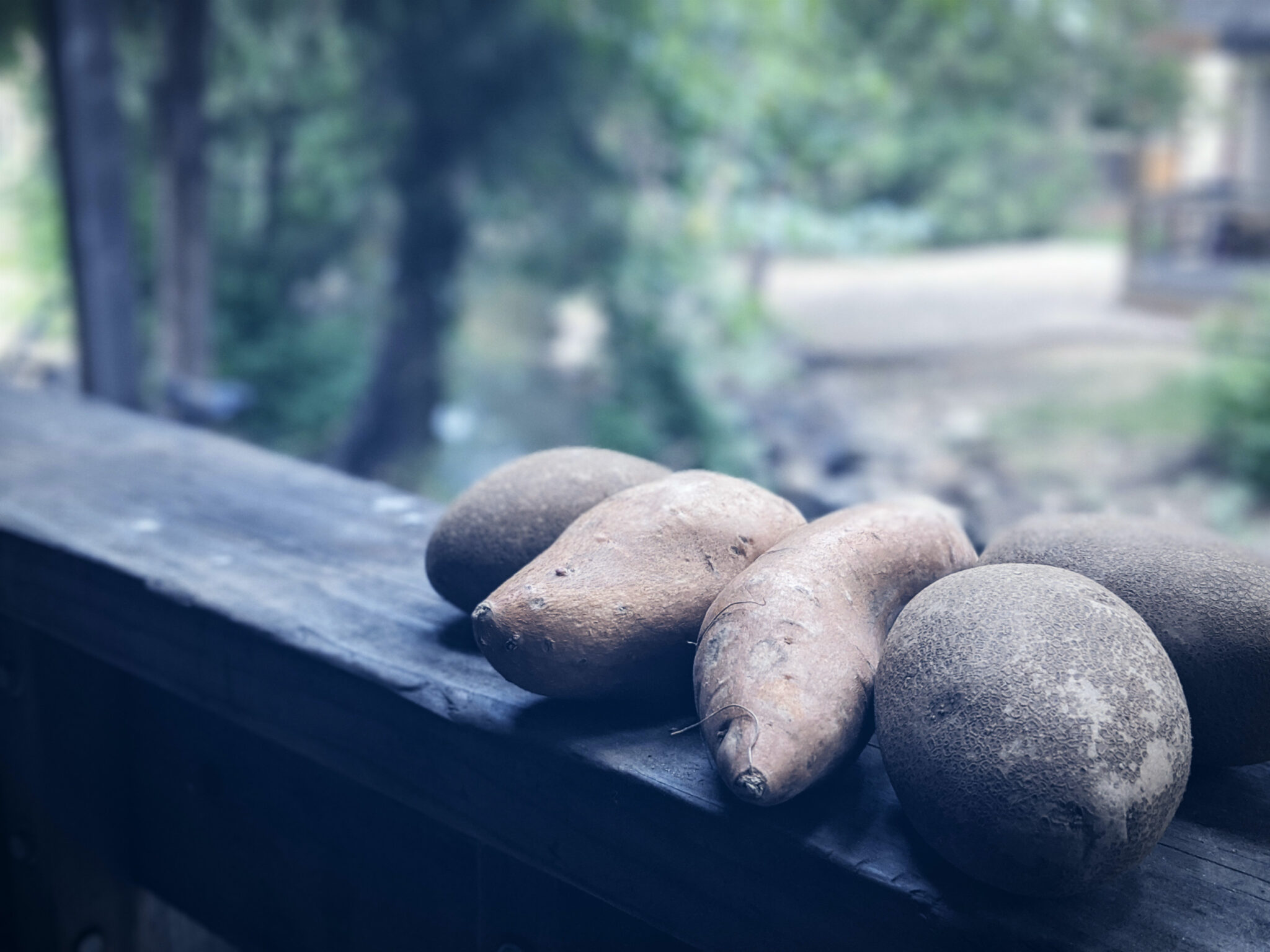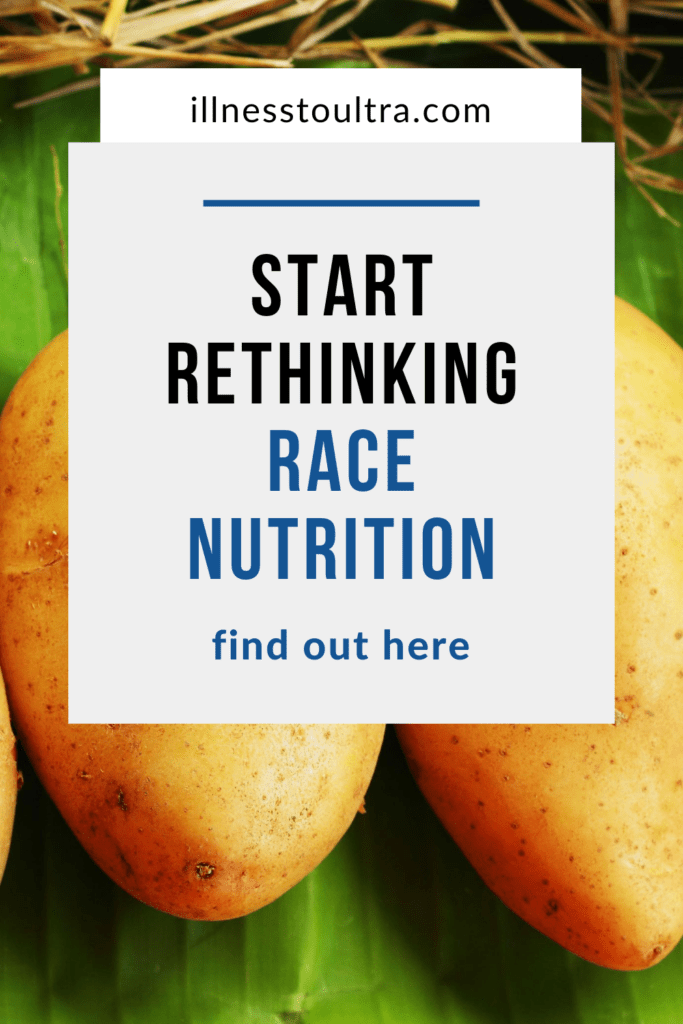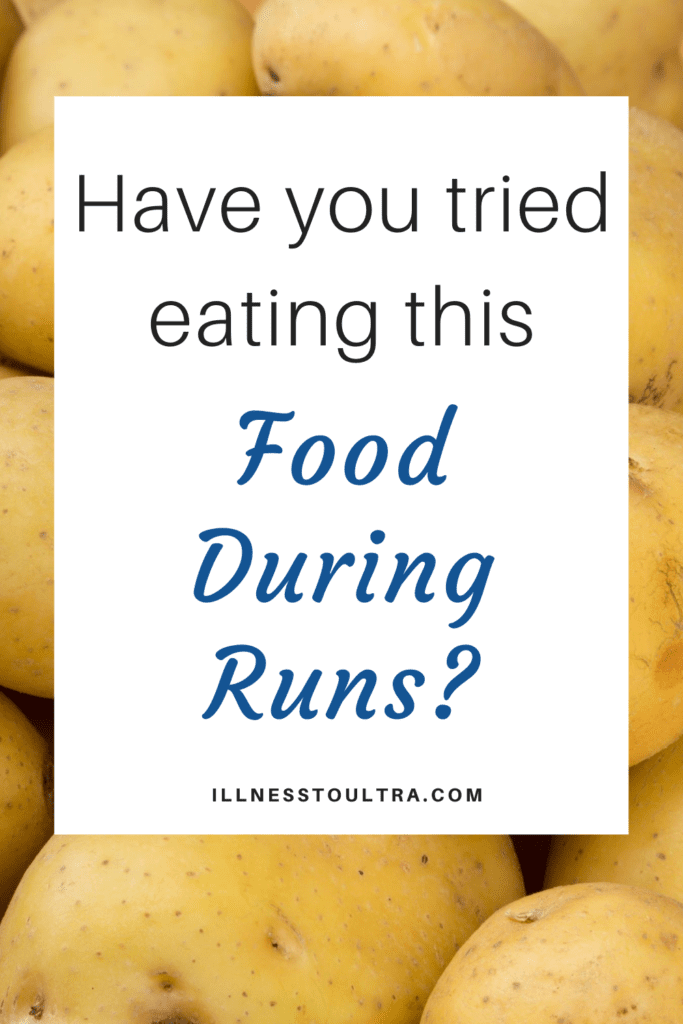So if energy gels aren’t the key race-day nutrition, then what is?
Well, I was recently browsing around and found an interesting post that mentioned potato puree as their endurance fuel. This article said the puree being just as good as energy gels when fueling a 2-hour cycling effort at about 60-85% of their maximum effort.
Yep. They used plain old potatoes. I bet you never thought you’d hear anyone suggesting this as a nutritious race food, did you?
Since I’ve been exploring different ways to change up my running nutrition – while also avoiding the use of energy gels – coming across potato puree certainly made me start digging a little deeper.
When used in the right setting, energy gels may be ok for some, but we know there are certain drawbacks for many of us. And most of the time, we believe the symptoms are just something we have to deal with in a race.
That’s not true! You can always improve your GI distress symptoms – especially on race days.
First, the form of sugars included in energy gels is often the most highly processed out there! Go on, turn around your gel pack and try and read the ingredient list. Can you pronounce any of them? If you are gluten-free like me, beware that some of those long weird names may be wheat derivatives.
Second, you’re probably not throwing back these gels in your regular (hopefully healthy) life routine, so how can you expect your gut to react positively to them while running? Your gut and your microbiome are sensitive to the foods that you consume. Even a single meal can change the diversity of the microbe population living inside you. And sugar often nudges it in the wrong direction.
If you’re having trouble using gels when you run, there could be many reasons. Fungal overgrowth can wreak havoc when you start introducing sugar (especially high levels of it). The gels may even be causing dehydration by drawing water from your blood! Both situations are pretty bad.
Eating a diet rich in whole foods has become pretty mainstream. And for obvious reasons, this is a great thing. Professionals have debunked those “heart-healthy” sugar-packed cereals and instead sub them for whole fruits and veggies.
So why do we ignore this fact when we fuel ourselves for a race?
I will concede that sugar is not bad when your body is utilizing it during a heavy endurance event like running or cycling. It’s an excellent source of energy that is readily available.
The issue comes about when you isolate these sweet compounds and refine them from their natural form. They tend to have different, unwanted effects on the body, such as weight gain, diabetes, and the onset of fatty liver disease. When you think about it, this makes sense because mother nature didn’t design food that way.
Potato puree
So, I mentioned the potato study at the start, which suggested that a more substantial amount of potato was required to provide the same energy as the sports gel. Since the potato is still in its complete form, it contains more than just carbohydrates. It contains nutrients like potassium, vitamin C, folate, and Vitamin B6. Multiple nutrients paired together often have a more significant effect in the body, making whole foods a better choice for nutrition.
Another interesting fact about potatoes is the formation of resistant starch as it cools off. Resistant starch is not digestible, which may sound like a bad thing until you discover that this is the perfect fuel for good bacteria in your gut. So not only are you fueling your race, but you’re also building a better microbiome!
The study compared the gut inflammation in blood markers and found that the level of gut inflammation was higher when using energy gels than when using the potato. It’s not too surprising considering sugars have been shown to aggravate the gut.
This study wasn’t all bells and whistles. Objectively, the participants using the potato noted more gas and flatulence than the energy gel group. A preexisting adaptation to energy gels may explain this or the inadaptation of the potato. But that is only speculation on my side.
Possibly. But it’s always best to try out your nutrition plan on your training runs first.
Only eating potatoes may be going a bit overboard, too. It could be a good idea to mix different types of whole food, which are higher in carbs but low in fiber, like potatoes.
If potatoes aren’t working for you, rice is another excellent option. It’s possible to make sweet sticky rice balls and wrap them in greaseproof paper for a whole food option on the move.
If you’re going for a longer run, it might be a good idea to add some fat. I discuss this more on the post “What to Eat When you Run,” where I suggest creating a trail mix that is easy to eat on the move and balances a lot of nutrients for optimum nutrition.
Ultimately, find which carby food combo works for you. Try things out. Just remember, whole foods are so much better for you!
Don’t mistake this for mash potato because you want a slightly moister consistency. Using more water, or adding a little olive oil will help with this.
- Chop the potatoes in half or quarters depending on how quick you want them to boil.
- Place in a pan and boil in salted water. Make sure the water level is above the potatoes.
- Cook until a fork smoothly glides into the potatoes.
- Drain and leave potatoes to cool
- Mash with a fork, adding oil, salt, or any flavor you desire
If you don’t like the taste of potato by itself, try mixing in a cooked carrot or sweet potatoes, which give a slightly sweeter flavor.
Using puree on the run sounds good until you think about how you’ll consume it. A good option would be to find some reusable squeeze packets. Like the packets baby food comes in. It allows you to eat quicker on the move and means you don’t need a spoon. 🙂
So what do you think? Have I convinced you to throw a potato in your pack for your next epic adventure?
Test it out. Swap one of those gels out, and see how it goes. You may be surprised.
Like this post? Pin it!


